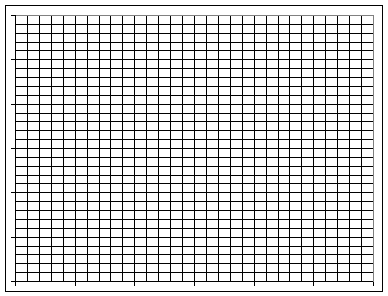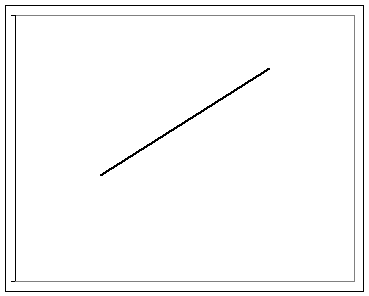
class 050912
Write out the following with the correct number of significant figures:
What is the percent uncertainty in the measurement 9.80 m/s^2 +- .05 m/s^2?
Sketch a graph of force vs. position for your 'slingshot'. Include the smooth curve you think best shows the actual force vs. position behavior of the 'slingshot'.

Answer the following questions about your graph:
What were your sliding distances and projectile ranges for the different pullbacks? Fill in the table below, leaving projectile distance blank if the trial was for a sliding distance, and leaving sliding distance blank for projectile trials:
| pullback | area under graph | projectile distance | sliding distance |
The graph below shows v vs. t. The time interval is taken to be `dt, the initial velocity is taken to be v0 and the final velocity is taken to be vf. Answer all the following in terms of the symbols v0, vf and `dt:

From the preceding question we find that
The equation a = (vf - v0) / `dt can be solved for vf. We obtain vf = v0 + a `dt.
Our graph therefore gives us the equations
Since vf = v0 + a `dt we can substitute v0 + a `dt into the first equation. This gives us
If we solve vf = v0 + a `dt for `dt we get `dt = (vf - v0) / a. Substituting this for `dt in the first equation we get
The four equations in boldface are as follows:
1. `ds = (v0 + vf) / 2 * `dt
2. vf = v0 + a `dt.
3. `ds = v0 `dt + 1/2 a `dt.
4. vf^2 = v0^2 + 2 a `ds.
These are the four equations of uniformly accelerated motion. Any time you know any three of the five quantities v0, vf, `ds, `dt and a for any interval of uniformly accelerated motion, these equations allow you to find the other two.
The following is very important:
Everyone needs to memorize these equations and be able to regurgitate them in 1 minute or less at any time for the duration of this course.
General College Physics and University Physics students need to be able to derive these equations from either the graph we have considered here, or from the definitions of velocity and acceleration, whichever is specified, for the duration of this course.
University Physics students need to know that the slope of a graph of y vs. x is called the derivative of y with respect to x, and represents the instantaneous rate of change of y with respect to x.
University Physics students also need to know that the area beneath a graph of y vs. x, between x = x0 and x = xf, is called the definite integral of y with respect to x from x = x0 to x = xf.
Questions:
Hello
Just wondering on the homework, number 12, when it says full
decimal numbers with standard units, what does that mean?
Can you give me an example?
Thanks
The question asked for a full (decimal) number in standard units for each of
several quantities. For example:
2.3 mm is the same as 0.0023 m
2.30 mm is the same as 0.00230 m, and indicates that the measurement is accurate
to 3 significant figure (i.e., that the 0 at the end was indeed the result of a
measurement, that the instrument used was capable of distinguishing between
2.29, 2.30 and 2.31, and it turned out to be 2.30).
See if this helps, and let me know if you have additional questions.
I was just wondering whether or not you wanted us to go ahead and make the
graph for our data findings and find the area or just do the homework you
assigned us.
Just do the table. I want to make sure people are doing that right before we
start making the graphs. I'll probably assign the graphs for Wednesday.
also on our homework, I was just wondering if i found the mile to be 1600 meters
and the metric mile is 1500, how do I find the percent. Would I take 100 / 15 to
be 6.67
You need to find the percent difference. The difference according to your
calculation is 100 meters. What percent is 100 meters of 1500 meters?
It is indeed 6.67 percent but I'm it's not clear whether you arrived at 100 / 15
by the correct line of reasoning.